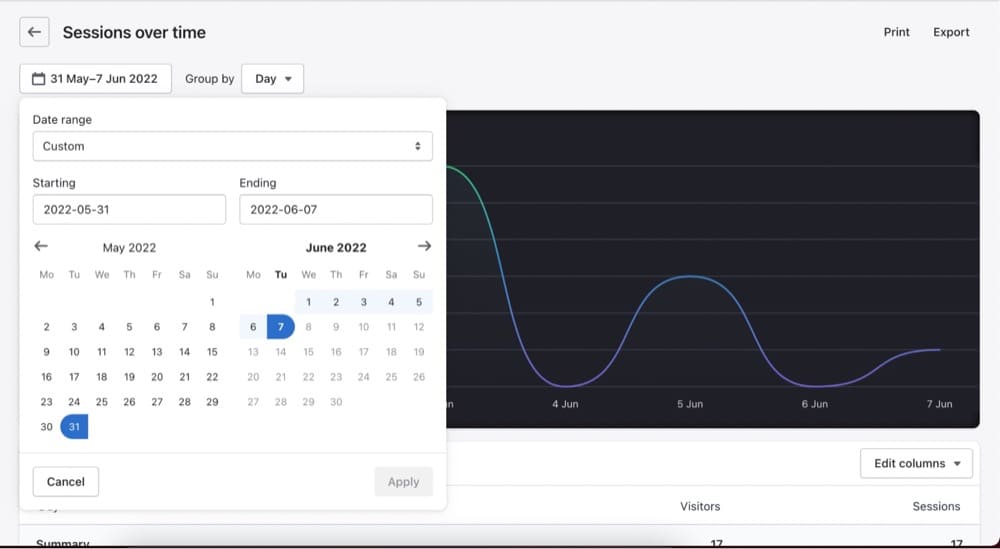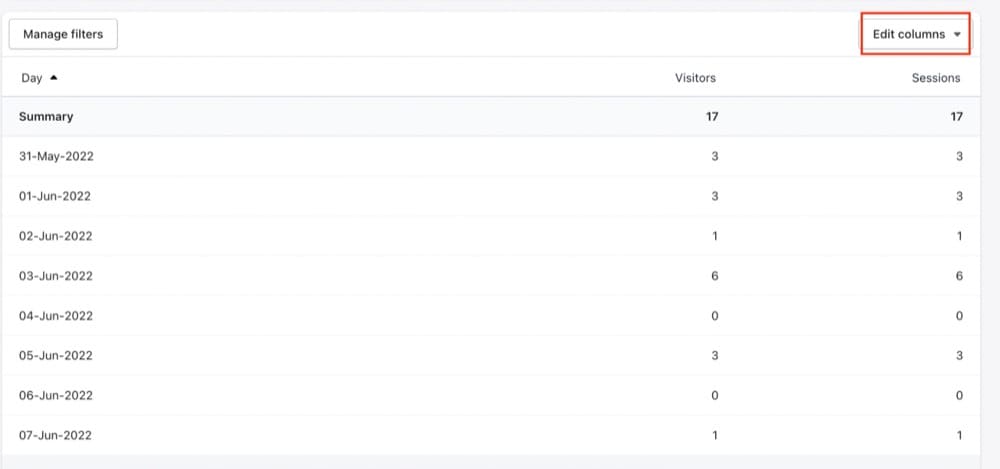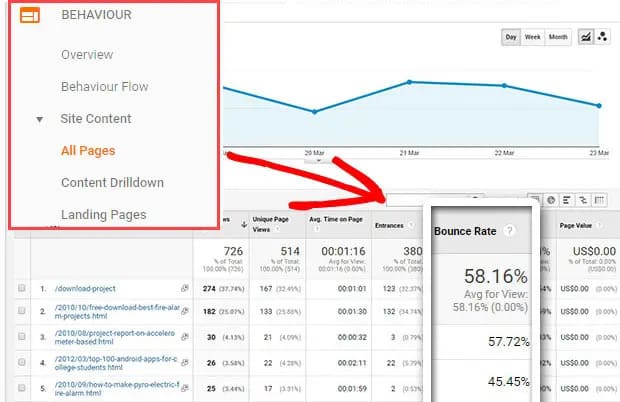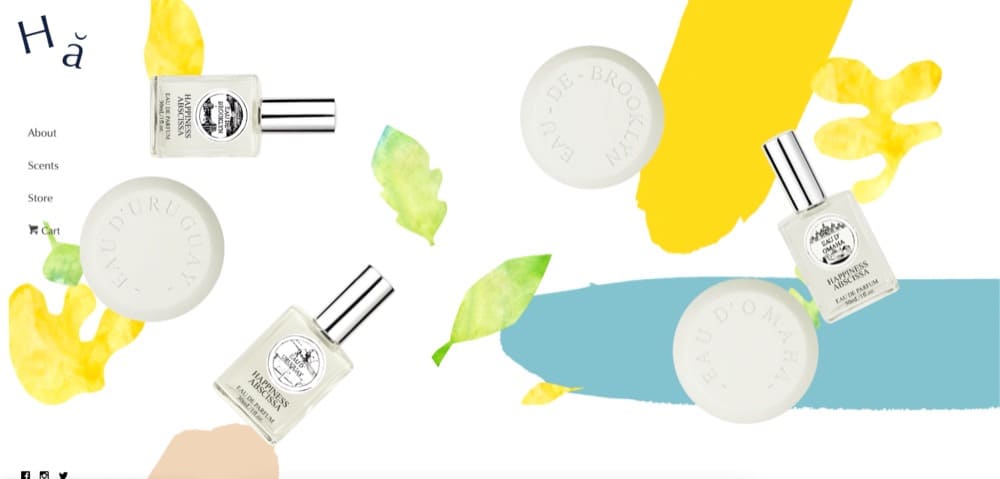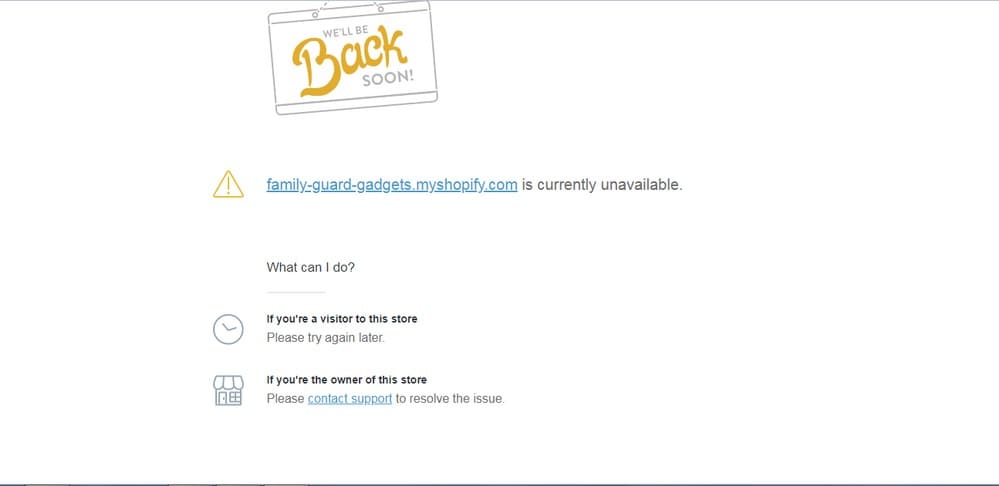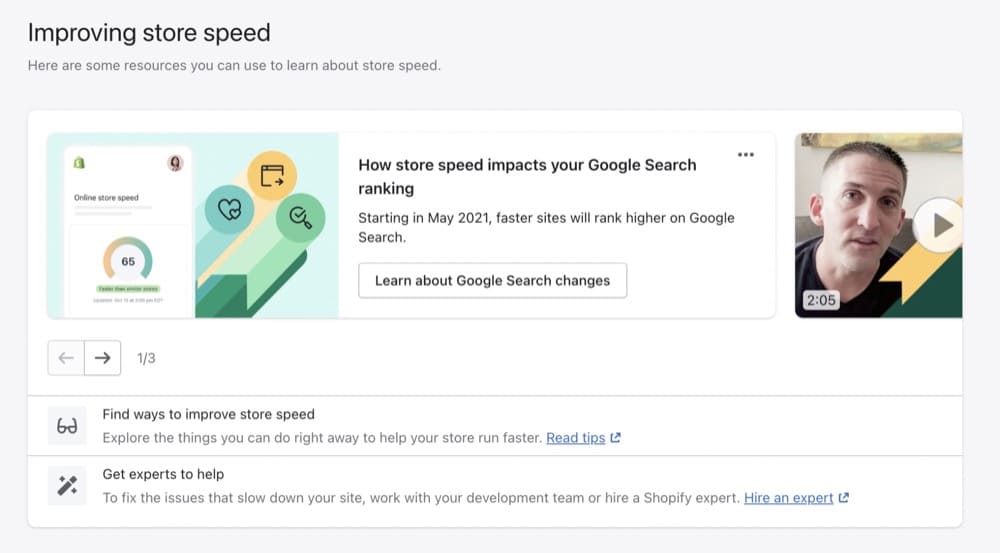Reducing Shopify Bounce Rate: A Step-by-Step Walkthrough
They came, they saw, they bounced.
High bounce rates mean fewer chances at conversion, fewer sales and—you guessed it—decreased revenue.
But reducing your bounce rate isn’t as simple as asking “what’s a good bounce rate for Shopify and how do I get there?”
The first step is for you to understand what bounce rate actually means and how to account for other factors or changes you make that may have an adverse impact on your site.
What is Bounce Rate?
Bounce rate is expressed as the percentage of visitors that land on your Shopify store but don’t take any other action like clicking a link or visiting another page.
Note: Google Analytics defines and calculates bounce rates like so:
A bounce is a single-page session on your site. In Analytics, a bounce is calculated specifically as a session that triggers only a single request to the Analytics server, such as when a user opens a single page on your site and then exits without triggering any other requests to the Analytics server during that session.
How Does Shopify Calculate Bounce Rate?
Shopify defines bounce rate as
The percentage of users who visit a single page on your website and leave before taking any action.
To calculate bounce rate, sessions over time are divided by sessions converted and you can view it under Analytics -> Reports -> Edit Columns -> Select Bounce Rate.
What is the Best Way to Think of Bounce Rate in eCommerce?
Imagine going on a date only to realize you’ve been catfished. What would you do? Most likely, you’d get back in your car and drive off. That’s exactly what visitors experience. When they show up on your site and don’t have the kind of experience they expect, they leave. And to you, it may feel like a virtual equivalent of having the door slammed on you. But it’s not personal—it’s actually normal online behavior.
For one, people are cloaked by anonymity and, as Rishi Rawat says, “buyers are in a promiscuous state of mind” when they first “step foot” on your site.
But not all high bounce rates are a cause for concern.
Here’s why: Littledata surveyed 3,824 Shopify sites in June 2022 and found the average bounce rate from desktop Google search for Shopify was 39.1%.
Using this data in isolation may seem like there’s something massively wrong if you’re above that benchmark. “Thank you pages” are meant to have high bounce rates. External factors like the pandemic or any type of unrest also deteriorate traffic quality and erode purchase intent.
When you view your bounce rates, remember that you have to understand the context and expected behavior for that situation. So if you want to fix your bounce problem, don’t start on low intent pages.
Focus on high intent pages that have consistently high bounce rates.
Dig into bounce rate by collection or bounce rate of product pages and if it’s coupled with high cart abandonment rates, it may be a sign that your products have a low perceived value, your message lacks clarity or there’s unnecessary friction.
Note: You will need to install an app or upgrade to Advanced Shopify or Shopify Plus to check the bounce rate by collection or product pages.
How to Check the Bounce Rate on Shopify?
Log in to your Shopify store and click on “Reports” under “Analytics”.
Under Acquisition, click on “Sessions over time”.
Choose the date range you want to see the bounce rate for:
Scroll down and click on “Edit columns”:
Choose “Bounce rate” from the dropdown:
Now you can view your bounce rate:
How to Check Bounce Rate on Google Analytics?
Heads up: If you use both Shopify Analytics and Google Analytics, the bounce rates may differ as they use different tools for the analytics.
Sign in to your GA account and click the Shopify store for which you want to see the bounce rate:
Go to Audience Overview -> click on Bounce Rate. This shows you the bounce rate for the entire store.
Go to Behaviour -> All Pages to see the bounce rate for individual pages on your store
Note: Shopify doesn’t support Google Analytics 4 on checkout pages so you may want to continue using Universal Analytics to track those.
Why is My Shopify Store Bounce Rate So High?
Before we can begin to talk through the actual steps to reduce bounce rate, let’s understand why people bounce:
Your Content is Unappealing
Remember the bad date analogy? Your SEO may be on point in getting you to the first page of the search engine but, if what you’re presenting doesn’t live up to those expectations, you’re catfishing your audience.
Let’s take a look at this Shopify store.
If you didn’t look at the URL, you wouldn’t know the company’s name. The first fold has no content and it isn’t until you scroll down, that you see some vague statements.
At this point, you’re wondering what Ha even is and how it’s supposed to impact your wellbeing. Overall, the homepage has no relevant content.
Your User Experience Lacks Optimization
Too many popups? No way to chat with support? Confusing navigation? Unoptimized product image sliders?
Hard pass.
Sites not designed with the user in mind create unnecessary friction in the name of aesthetics.
Kylie by Kylie Jenner suffers from a few of these problems:
The nav bar has way too many options. When you click on Kylie Cosmetics, then you realize that the “Kylie” above the logo is also a separate tab.
The same options are repeated in the nav bar below: Shop cosmetics, shop skin, shop baby.
The dropdowns are also inconsistent. Shop Skin and Shop Cosmetics have a drop-down menu but Shop Baby does not.
Overall, the layout is pretty cluttered with too many products and links.
Your Site is Riddled with Technical Errors
Is your site down? Are people unable to checkout? Did a plugin malfunction?
Check your site for technical errors if your bounce rate is exceedingly high. While some customers may alert you to such issues, you can be proactive and set up triggers so you’re aware of errors as soon as they crop up.
Your Pages Load Incredibly Slow
Slow speeds can be a conversion killer. Nearly 70% of consumers admit that if page load times are too slow, they are less likely to make a purchase from that site.
Every second counts. A study by Portent found that the highest conversion happens on sites that load in 0-2 seconds.
Here’s a look at how the Kylie store fares on PageSpeed Insights:
It takes 4.4 seconds for the first contentful paint i.e. the first bit of content that appears to let the user know the page is actually loading which is quite slow compared to the industry benchmark.
Note: While page speed is absolutely important, bigger brands can get away with slightly slower loading times because they already have a raving fanbase.
How to Reduce the Bounce Rate of Your Shopify Store (+Tips from Shopify Store Owners)
Your bounce rates can be reduced if you take care of the 4 major reasons we discussed above but let’s dive into some more things you can do:
● Make sure the right people visit your site
● Focus on meaningful personalization
● Speed up your Shopify store
● Create a phenomenal user experience
● Build trust with your buyers
● Fix your technical errors regularly
Make Sure the Right People Visit Your Site
Who’s your target audience? Don’t say “everyone.”
There may be something for everyone in your store but if you don’t define your audience, your copy falls flat, your images are lackluster and you can’t know what levers you have to pull to get that segment to convert.
For example, say your audience is mostly women aged between 19-25 who want an easy way to style their hair.
Since they’re Gen Z, you may benefit from using TikTok slang in your copy and making more payment options including crypto available.
Now let’s focus on their pain point: an easy way to style hair. Given the age range, they’re most likely either getting up early to go to college or work and so are more likely to search for things like “damage proof everyday hair styling options,” or “quick and easy hair styles.”
The more you know about them, the better you can fine-tune your keyword research. Even if these keywords don’t have a huge search volume, you’ll ensure you’re bringing in the right traffic leading to a decrease in your bounce rates.
You can lower the bounce rates by ensuring that the right people visit your site. To do this, invest time and effort in keyword research and improve your SEO marketing. With a top keyword strategy, you narrow down your audience to those people who are searching for your niche. Tools like Ahrefs and Google Keyword Planner can assist you in determining the most suitable keywords and phrases for your store
Farnam Elyasof, CEO, Flex Suits
The most insightful part for us was learning which keywords were in our top rankings. Some of them didn’t fit the right search intent for our products, meaning more users bounced as they looked for other content. We used the feedback to build a stronger content strategy to target more relevant keywords—we’ve seen a big improvement in our bounce rate!
Stephen Light, Co-Owner and Chief Executive Officer @Nolah Mattress
Focus on Meaningful Personalization
Personalization is often sold as a silver bullet to an overly nuanced and complicated issue but the truth is most businesses don’t have enough traffic or can’t rely on their data to identify meaningful segments to deliver messaging or experiences that will have any impact on purchase intent and engagement.
For instance, if most of your sales come from Arizona, you can’t just add pictures of Rocky Mountains when you’re trying to sell hair products and expect it to mean anything to potential customers.
But it doesn’t mean you shouldn’t personalize your content at all. It does move the needle as evidenced by this test:
Focus on meaningful personalization instead of creeping your visitors out by overtly letting them know you’re tracking them for purely random reasons. Like in the example about the Gen Z women needing an easy way to style their hair, focus on different hair types and personalize content for each hair type.
Speed up Your Shopify Store
This one’s a no-brainer. The faster your page loads, the lower your bounce rates.
And you can apply this knowledge to all your pages, even the low-intent ones because it helps with SEO which in turn helps bring more of the right audience segments lowering your bounce rate.
Use Google PageSpeed Insights to check your page speed by registering your store on Google to obtain a tracking ID, which you save into Shopify’s preferences. Once installed, PageSpeed Insights will give you a rundown of your site.
Farnam Elyasof, CEO, Flex Suits
Every additional second that users must wait for your homepage to load, your business loses about 12% of conversions on product purchases on average. Keep your media sizes small and formatted correctly, keep loading speed down, and design for ease to have the best results in retaining new leads.
Zach Goldstein, CEO & Founder of Public Rec
For my website, I did it by reducing the number of plugins and keeping the necessary ones only, optimizing my website’s images, and enabling browser caching.
James Crawford, Co-Founder, DealDrop
Recap: Check your page speed on PageSpeed Insights, GTMetrix or Shopify’s Online Store Speed report.
Here’s what the Online Store speed from Shopify looks like:
Shopify’s Online Store Speed report tracks store speed over time and also gives you some resources you can use to reduce your loading times:
Create a Phenomenal User Experience
When it comes to designing your store, there are a few best practices you should keep in mind:
- Keep the navigation simple and easy to understand
- Include alt texts for all media for accessibility
- Don’t clutter your home page with too many images
- Make sure the internal search bar is functional and visible
- Create a responsive design for all devices
- Categorize and tag products appropriately
Users expect traditional layouts so if you do wander away from the norm, make sure you A/B test that idea so you’re sure visitors aren’t turning away from your site in frustration.
A/B test your homepage content, welcome pop-ups, and navigational design for the best chance at improving your bounce rates. The easier your homepage is to view, understand, and navigate, the more likely you are to retain users’ interest.
Zach Goldstein (he/him), CEO & Founder of Public Rec
P.S. You can use an A/B testing platform like Convert that’s designed for Shopify store owners.
Poor design also affects your store’s bounce rates, so ensure that site navigation of your shop is easy and fast for visitors. For example, place the navigation menu in traditional spots to be visible.
Farnam Elyasof, CEO, Flex Suits
One of my favorite strategies for reducing bounce rates on our website (www.mothersfamilyrings.com) from mobile devices is optimizing the internal search. It is as simple as making the internal search bar visible on mobile devices. Most websites have the internal search bar hidden in the navigation dropdown. We noticed that when people used our website’s internal search bar on their mobile device, the conversion rate was 4x that of those who didn’t. We immediately moved it to being visible at the top of the mobile website 100% of the time, and saw our average conversion rate on mobile devices almost double and bounce rates dropped by 20%.
Jeff Moriarty, Moriarty’s Gem Art
Build Trust with Your Buyers
One of the biggest reasons for bounce rates on Shopify stores is trust. Consumers are becoming more aware of Shopify stores selling inferior products with slow shipping times from AliExpress. Most of these stores have a similar look and consumers are recognizing them because they often use the same free Shopify theme. I have found paying for a unique theme, using custom images as well as removing trust badges and huge discount offers, all reduce bounce rates considerably.
Thomas Sleeth, Founder and editor at Dropshipping Hustle
If buyers can’t trust you right off the bat, you’ve lost them. Invest in your story, branding, place all your policies in the footer, use trust badges, customer reviews and user-generated images so you can win the skeptics over.
You can also give buyers a virtual VIP tour of how your products get made to increase transparency:
One of the strategies we use to reduce bounce rate significantly is using short descriptive videos to show not only the process of the printing but also the details of the products.. They’re short, engaging and to the point which make it fun to watch to understand the process, the quality and the effort that goes into the product, but also offers so much insight, details and a real look into the end product to help the user make a purchase.
Michael Nemeroff, CEO & Co-Founder, RushOrderTees
Fix Your Technical Errors Regularly
Using SEMrush or another website auditing platform, you can determine any key issues with your Shopify store including broken links, keyword rankings, lagging site speed, and more.
By performing a new site audit monthly, we cull and create highly-targeted SEO-friendly content to keep our bounce rate as low as possible.
Stephen Light, Co-Owner and Chief Executive Officer @Nolah Mattress
You can also use Screaming Frog, Ahrefs, Lighthouse or GTMetrix to perform site audits. These reports offer a ton of information on the errors your site is riddled with and steps to fix them.
If you’re anticipating a huge amount of traffic on mega sale days like Black Friday, make sure your server is able to handle the extra traffic.
A/B Test Your Way to a Reduced Bounce Rate
We’ve learned that while bounce rates matter, a high bounce rate isn’t always bad and that you should focus more on high-intent pages.
But when it comes to making changes on your high-intent pages, you have to be careful.
These are the pages driving more traffic, conversions, and sales. And since new versions can adversely impact your north star metrics, you may be hesitant to fix what’s broken and leave money on the table.
A/B testing is a sure-fire way to know how users react to changes without upending your entire store. Once those tests confirm your hypotheses, you can launch the new versions without worrying about your bottom line.
To get a better understanding of what your customers want and reduce bounce rates, use an A/B testing platform like Convert that’s easy to set up and offers accurate results.

Written By
Sneh Ratna Choudhary

Edited By
Carmen Apostu





